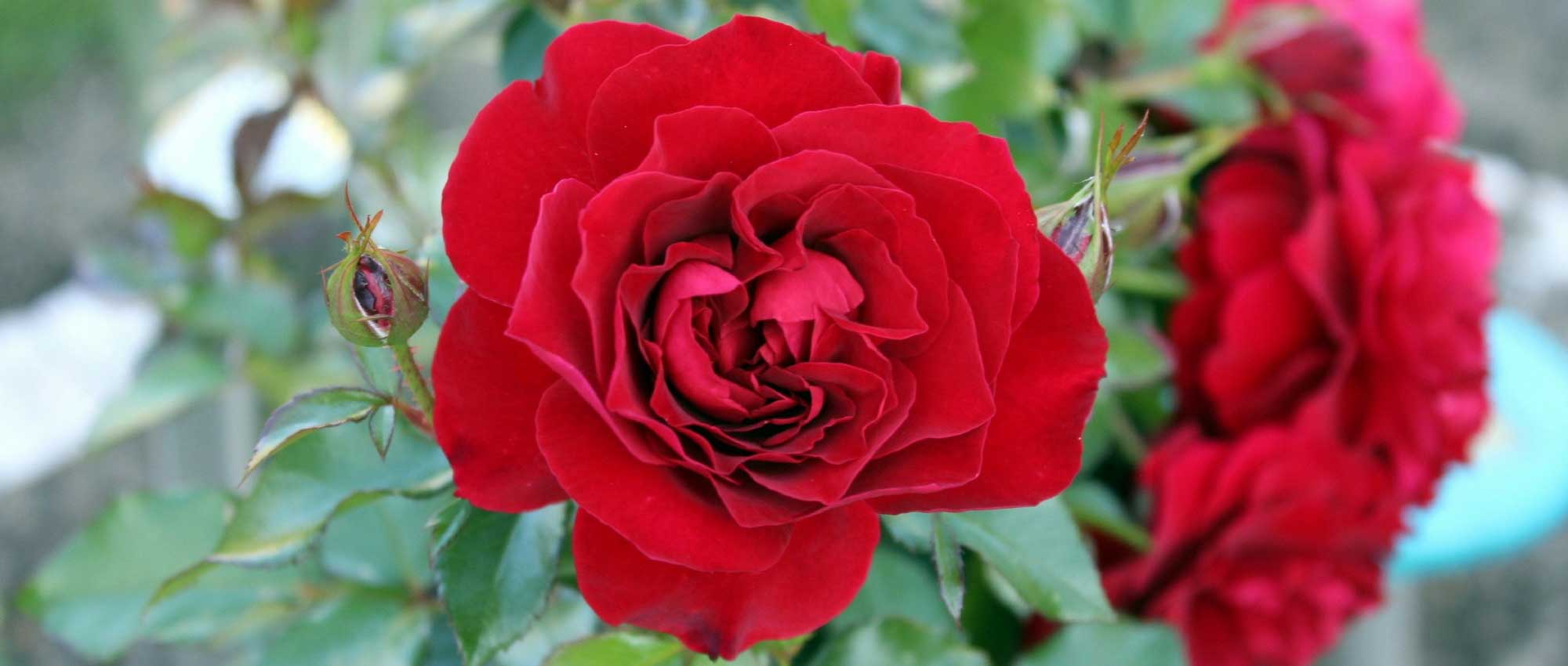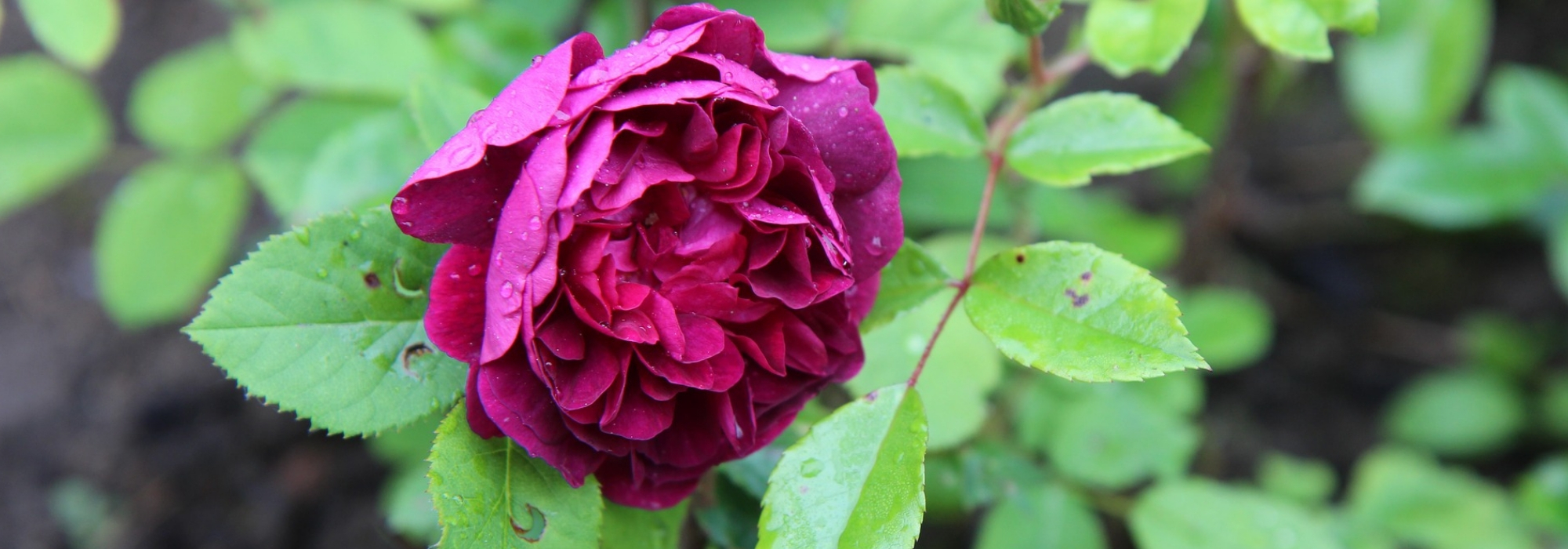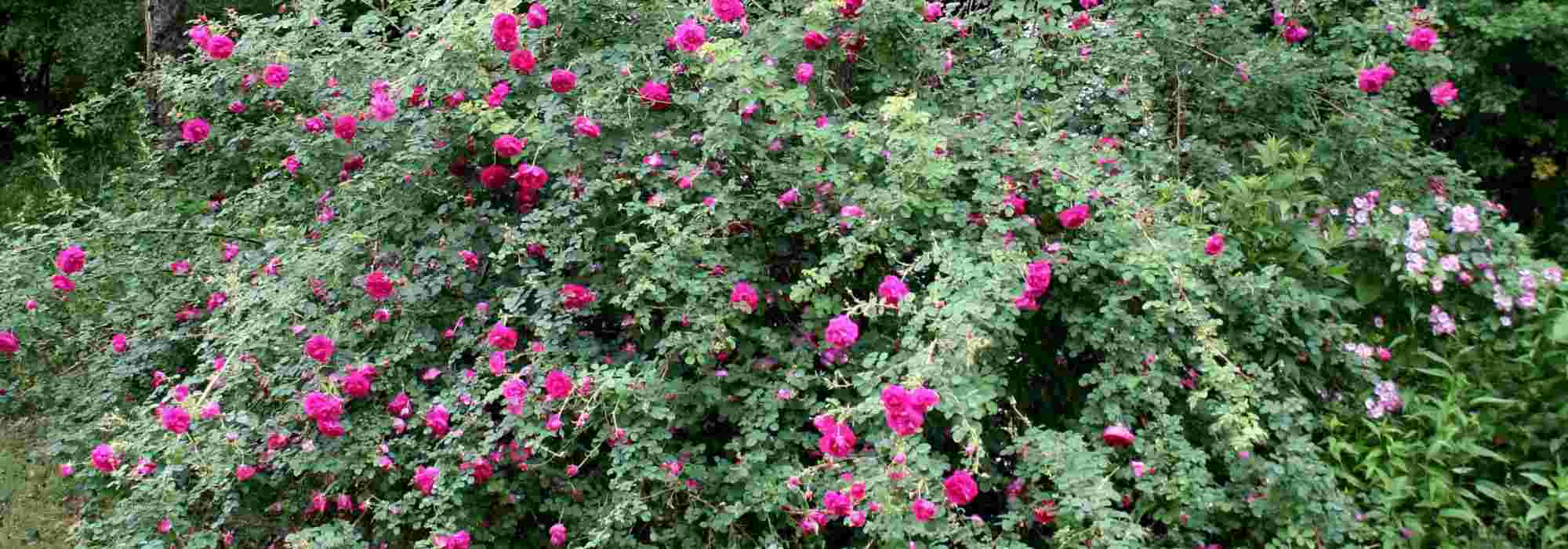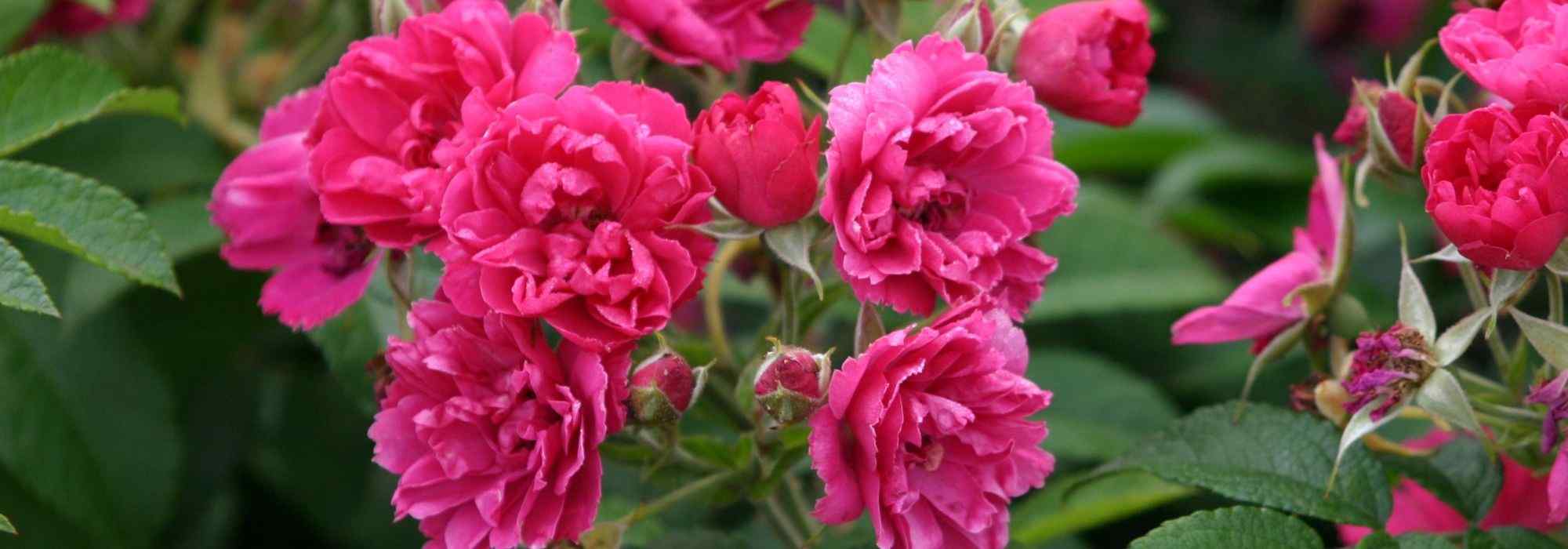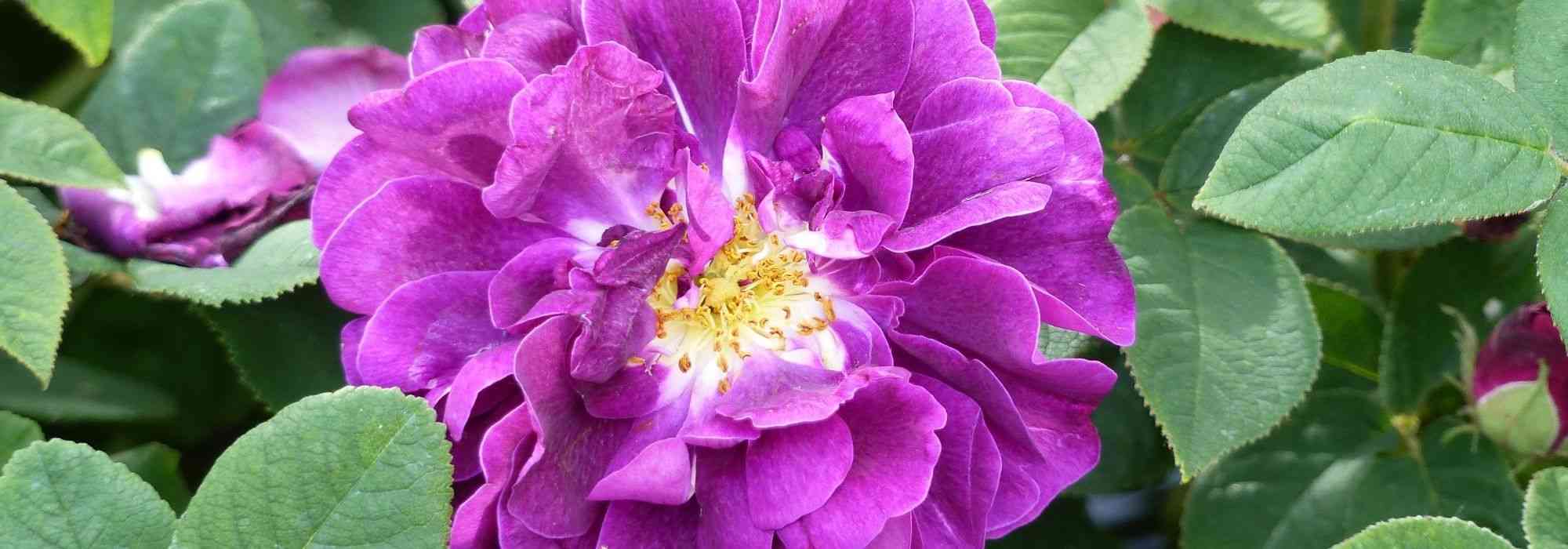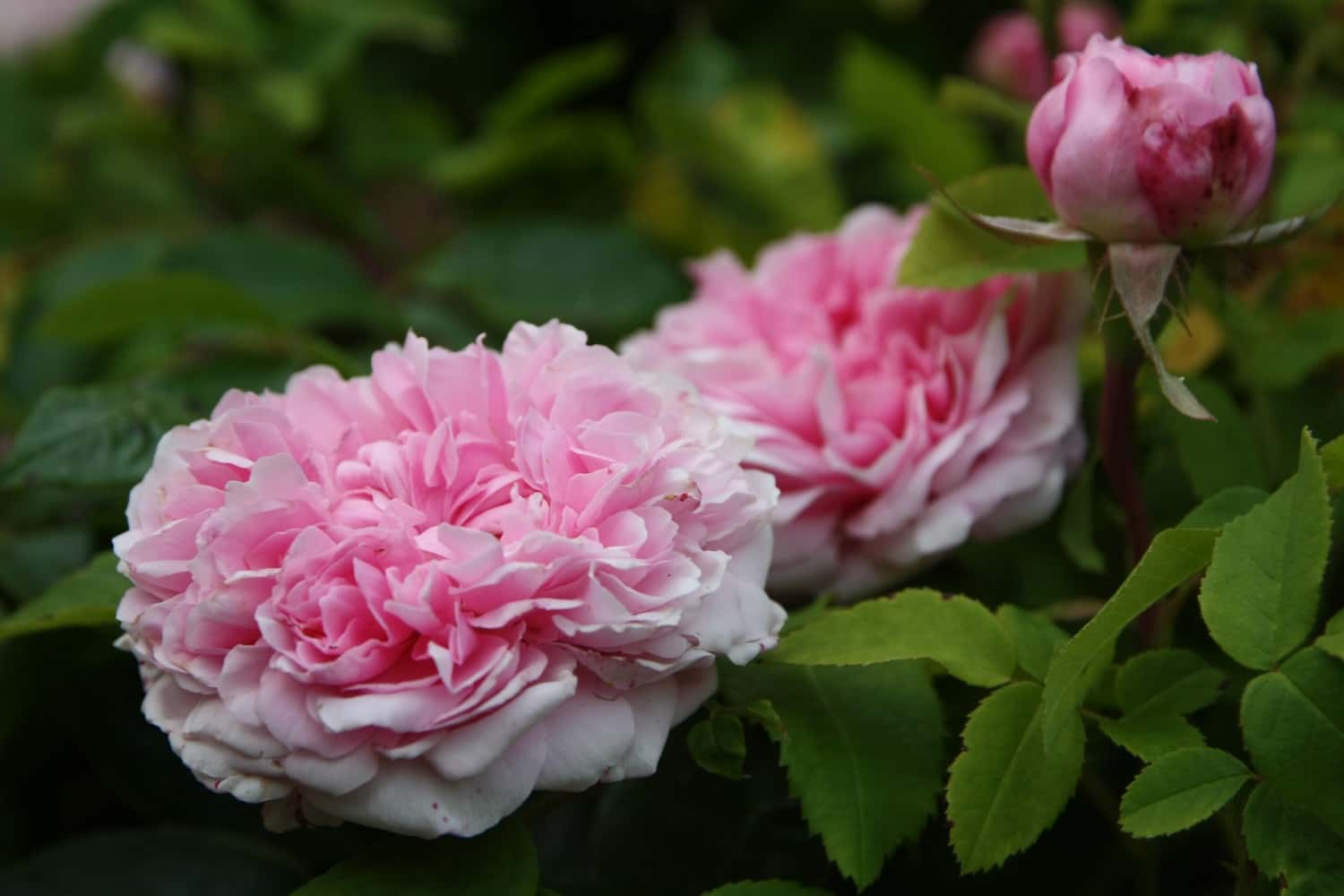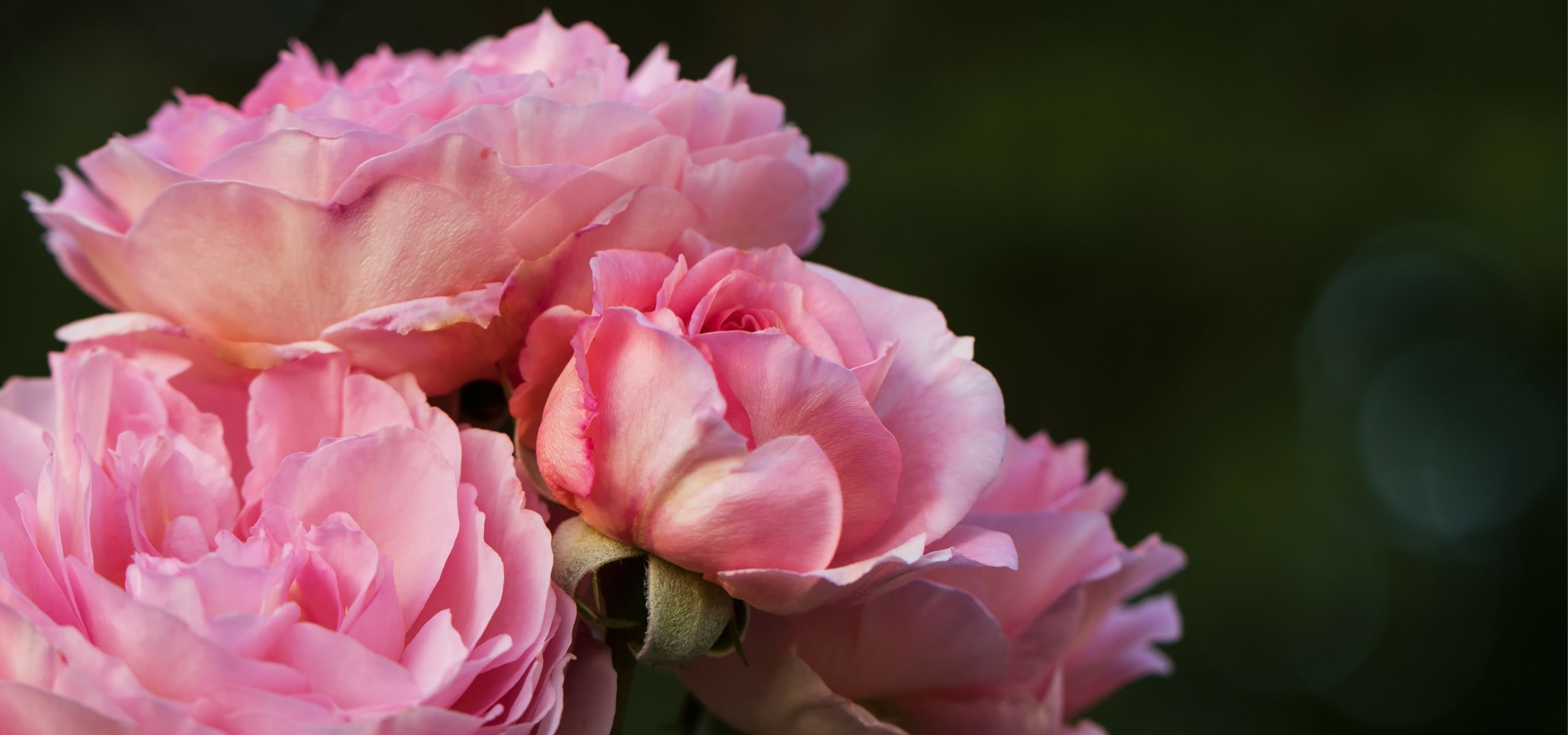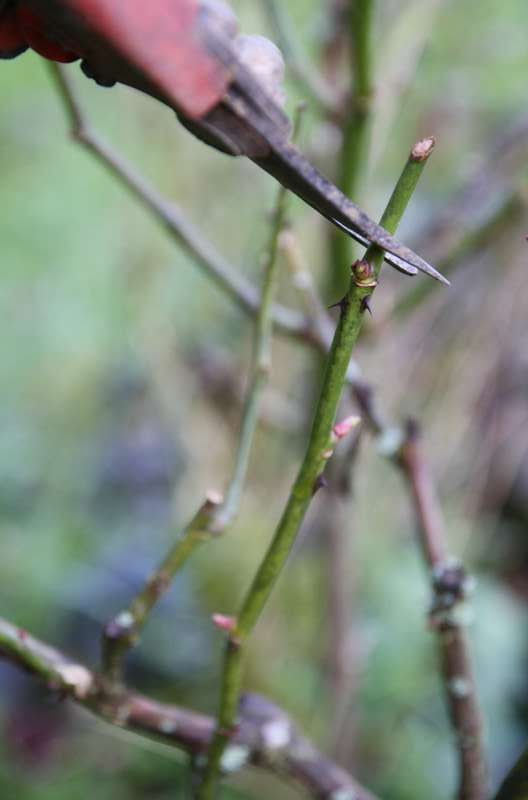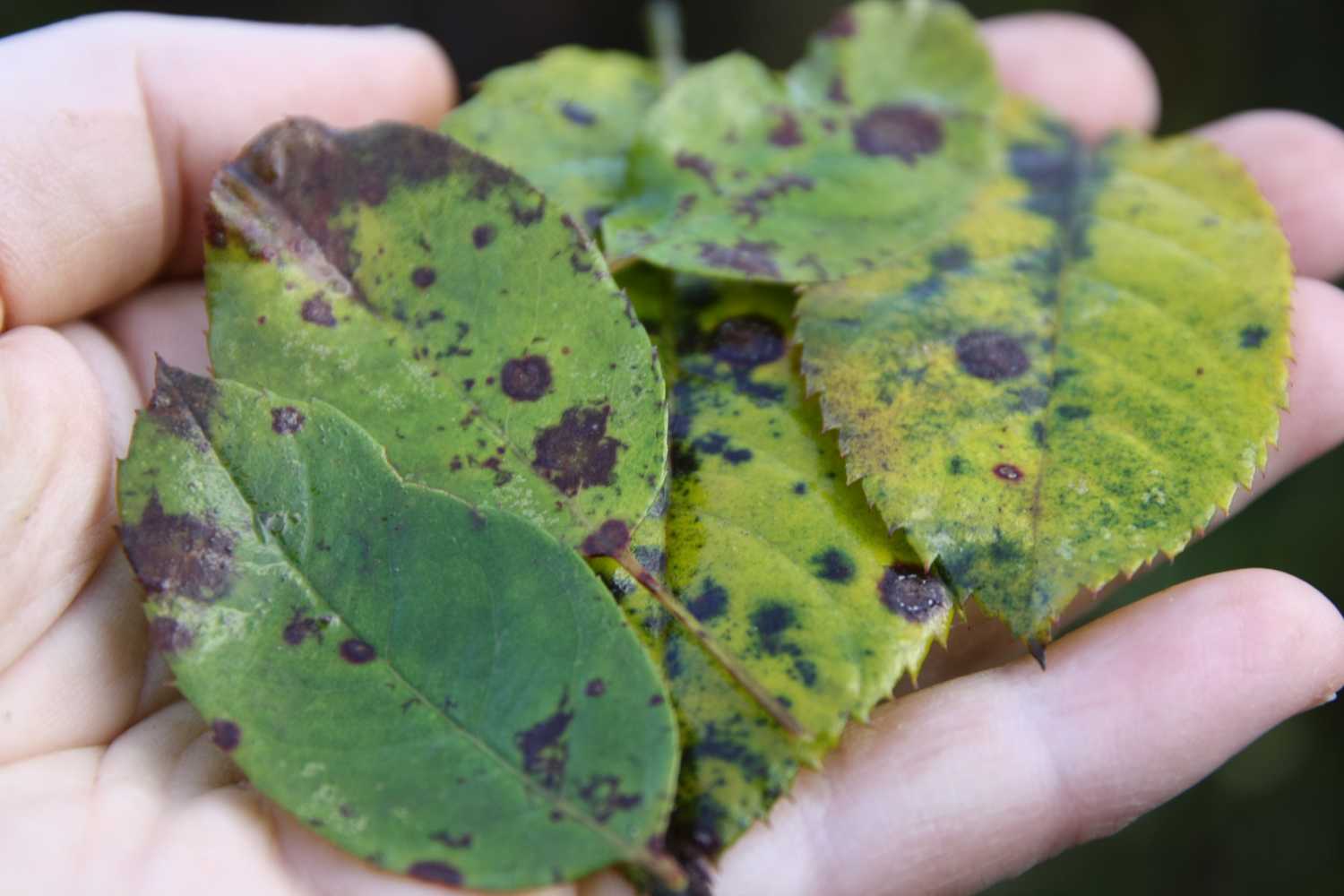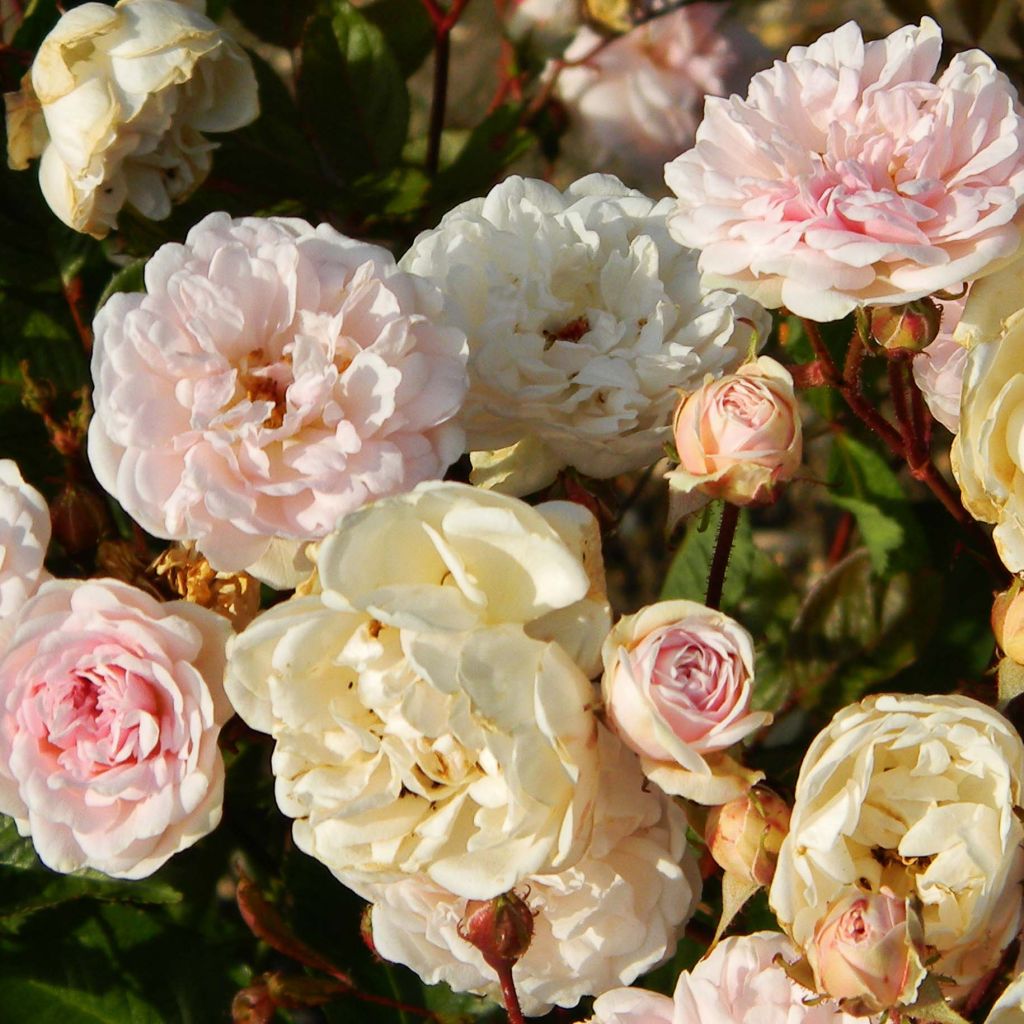

Rosa Marie Pavie
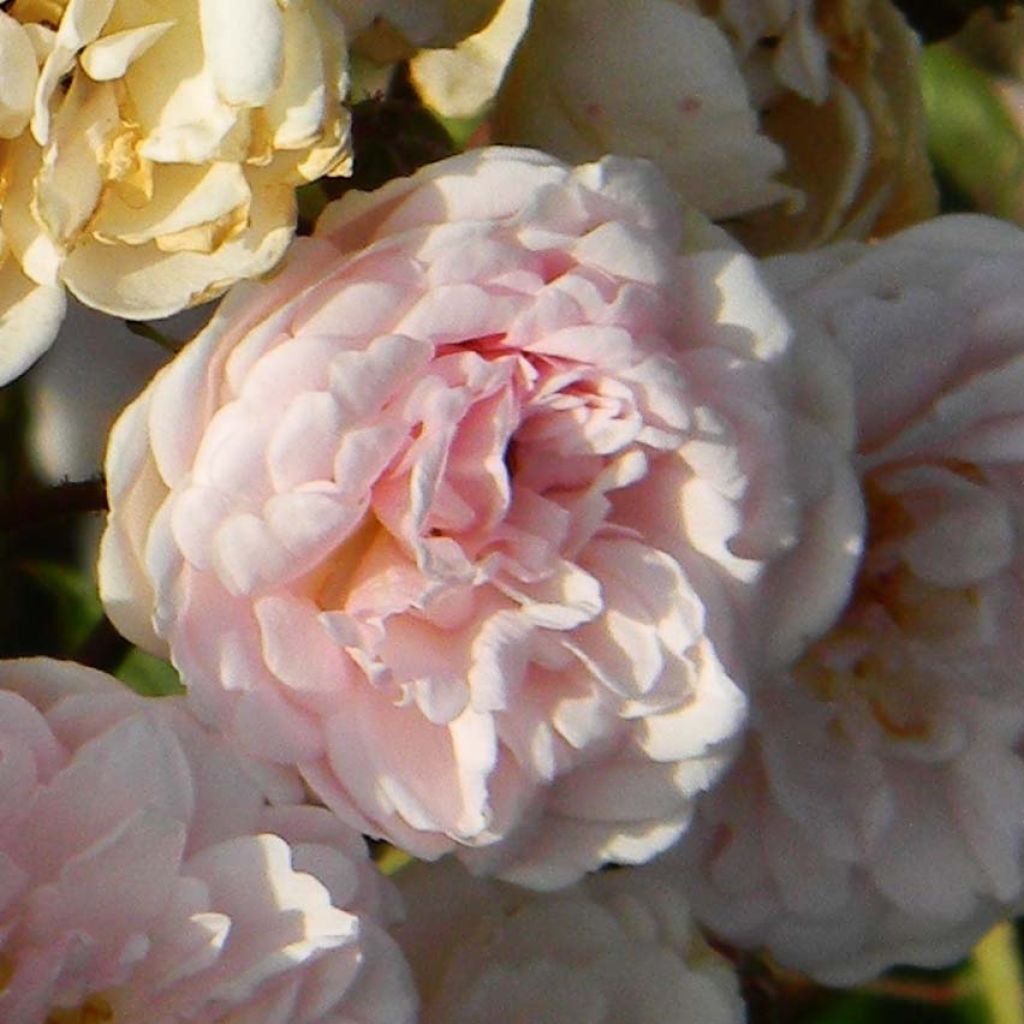

Rosa Marie Pavie
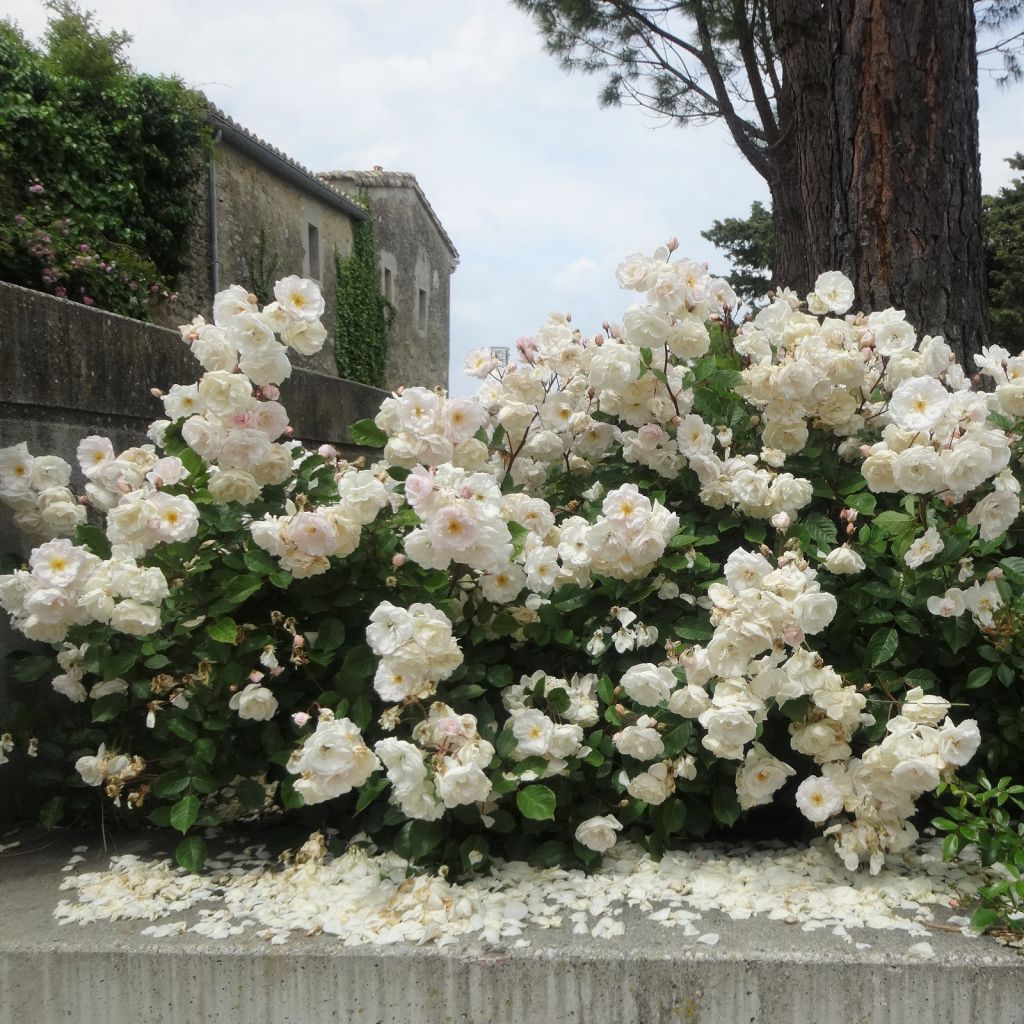

Rosa Marie Pavie
Rosa Marie Pavie
Rosa x polyantha Marie Pavie
Polyantha Rose
Thank you to the staff (for order preparation and shipping), the rose bush received seems healthy. Planted along the edge of the pathway, close to the "Kosmos" variety, I'm now patiently waiting for it to take root...(or not?).
Thierry, 17/09/2025
Special offer!
Receive a €20 voucher for any order over €90 (excluding delivery costs, credit notes, and plastic-free options)!
1- Add your favorite plants to your cart.
2- Once you have reached €90, confirm your order (you can even choose the delivery date!).
3- As soon as your order is shipped, you will receive an email containing your voucher code, valid for 3 months (90 days).
Your voucher is unique and can only be used once, for any order with a minimum value of €20, excluding delivery costs.
Can be combined with other current offers, non-divisible and non-refundable.
Home or relay delivery (depending on size and destination)
Schedule delivery date,
and select date in basket
We guarantee the quality of our plants for a full growing cycle, and will replace at our expense any plant that fails to recover under normal climatic and planting conditions.
Description
The 'Marie Pavie' Rose is one of the best old-fashioned polyantha roses. Not very tall, but dense and always blooming, it can become a beautiful bush offering delicate bouquets of charming small double flowers, which open in a very pale pink, then turning creamy white, with crumpled silk petals surrounding a heart of golden stamens. Its flowers exude a delicious anise scent, which hovers above impeccable foliage, free from diseases. With its rounded habit and tender flowering, it is easy to associate, at ease in all gardens. It is also a small hardy and easy-to-grow bush in the sun, in ordinary soil.
Rosa 'Marie Pavie' is part of the varieties developed by the Lyon rose grower Allégatière in 1888, originally resulting from hybridizations between R. multiflora and R. chinensis. It forms a small bush of 70cm (27.6in) to 1.50m (4ft 11in) in height, with a width of 50cm (19.7in) to 1.20m (3ft 11in), very branched, vigorous but flexible and covered with very healthy, slightly shiny dark green foliage. It proves to be highly resistant to rose diseases, and its branches bear almost no thorns. Its flowering is remarkably long, lasting for 5 to 6 months, it is in bloom. This bush renews in successive waves throughout the summer, its double corollas of 4cm (1.6in) in diameter, gathered in terminal clusters. The tightly closed buds open into turbinate flowers, then give way to roses with aniseed scents with a slightly more relaxed appearance. The colour of the flowers is a flesh pink nested in the predominantly very pale flesh pink flower, then a creamy white before deflowering.
Polyantha hybrid roses allow for beautiful small hedges, planted mixed at the edge of the terrace or in small shrub beds. Combine them with Abelias, Nandinas, or Caryopteris for example. They are good companions for panicle phlox and tall Gypsophila. The modest size and fragrance of the roses of 'Marie Pavie' make it an interesting variety for growing in large pots near the house, with appropriate fertilizer and watering. Smooth and undemanding, this rose will thrive in the sun, partial shade, or even shade.
Rosa Marie Pavie in pictures
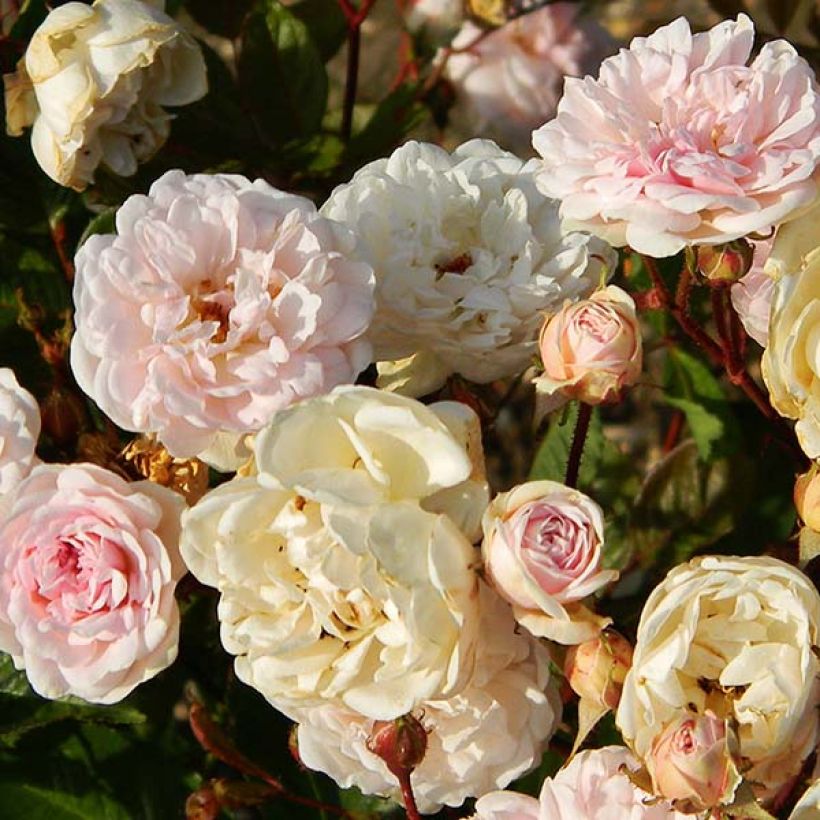

Plant habit
Flowering
Foliage
Botanical data
Rosa
x polyantha
Marie Pavie
Rosaceae
Polyantha Rose
Cultivar or hybrid
Rosa canina Laxa (4L/5L pot)
Planting and care
Plant the 'Marie Pavie' polyantha rose from November to March, in ordinary, well-tilled, and well-drained soil. Roses prefer clayey soils, rather heavy than light. In soil that is too sandy, too compact, or too dry in summer, it is advisable to incorporate compost, decomposed manure, or compost at the bottom of the planting hole. However, this rose dreads waterlogged soils in winter. Place it in a sunny location, or at most in partial shade. Roses are greedy plants, so a specific fertilizer will be beneficial at the start of vegetation, and regularly throughout flowering. To promote reblooming, regularly remove faded flowers. Polyantha rose varieties are more vigorous and floriferous than large-flowered rose varieties. Therefore, prune the stems by about one-quarter of their length (from 4 to 6 eyes from the base of the stem) at the end of winter. Always prune above an outward-facing eye to encourage bushiness and prevent branches from entangling in the center of the branches.
Roses are often spotted or unsightly at the end of summer, but this is not a problem for their development. These spots are not harmful to the rose; it is a natural phenomenon.
Planting period
Intended location
Care
Planting & care advice
-
, onOrder confirmed
Reply from on Promesse de fleurs
Haven't found what you were looking for?
Hardiness is the lowest winter temperature a plant can endure without suffering serious damage or even dying. However, hardiness is affected by location (a sheltered area, such as a patio), protection (winter cover) and soil type (hardiness is improved by well-drained soil).

Photo Sharing Terms & Conditions
In order to encourage gardeners to interact and share their experiences, Promesse de fleurs offers various media enabling content to be uploaded onto its Site - in particular via the ‘Photo sharing’ module.
The User agrees to refrain from:
- Posting any content that is illegal, prejudicial, insulting, racist, inciteful to hatred, revisionist, contrary to public decency, that infringes on privacy or on the privacy rights of third parties, in particular the publicity rights of persons and goods, intellectual property rights, or the right to privacy.
- Submitting content on behalf of a third party;
- Impersonate the identity of a third party and/or publish any personal information about a third party;
In general, the User undertakes to refrain from any unethical behaviour.
All Content (in particular text, comments, files, images, photos, videos, creative works, etc.), which may be subject to property or intellectual property rights, image or other private rights, shall remain the property of the User, subject to the limited rights granted by the terms of the licence granted by Promesse de fleurs as stated below. Users are at liberty to publish or not to publish such Content on the Site, notably via the ‘Photo Sharing’ facility, and accept that this Content shall be made public and freely accessible, notably on the Internet.
Users further acknowledge, undertake to have ,and guarantee that they hold all necessary rights and permissions to publish such material on the Site, in particular with regard to the legislation in force pertaining to any privacy, property, intellectual property, image, or contractual rights, or rights of any other nature. By publishing such Content on the Site, Users acknowledge accepting full liability as publishers of the Content within the meaning of the law, and grant Promesse de fleurs, free of charge, an inclusive, worldwide licence for the said Content for the entire duration of its publication, including all reproduction, representation, up/downloading, displaying, performing, transmission, and storage rights.
Users also grant permission for their name to be linked to the Content and accept that this link may not always be made available.
By engaging in posting material, Users consent to their Content becoming automatically accessible on the Internet, in particular on other sites and/or blogs and/or web pages of the Promesse de fleurs site, including in particular social pages and the Promesse de fleurs catalogue.
Users may secure the removal of entrusted content free of charge by issuing a simple request via our contact form.
The flowering period indicated on our website applies to countries and regions located in USDA zone 8 (France, the United Kingdom, Ireland, the Netherlands, etc.)
It will vary according to where you live:
- In zones 9 to 10 (Italy, Spain, Greece, etc.), flowering will occur about 2 to 4 weeks earlier.
- In zones 6 to 7 (Germany, Poland, Slovenia, and lower mountainous regions), flowering will be delayed by 2 to 3 weeks.
- In zone 5 (Central Europe, Scandinavia), blooming will be delayed by 3 to 5 weeks.
In temperate climates, pruning of spring-flowering shrubs (forsythia, spireas, etc.) should be done just after flowering.
Pruning of summer-flowering shrubs (Indian Lilac, Perovskia, etc.) can be done in winter or spring.
In cold regions as well as with frost-sensitive plants, avoid pruning too early when severe frosts may still occur.
The planting period indicated on our website applies to countries and regions located in USDA zone 8 (France, United Kingdom, Ireland, Netherlands).
It will vary according to where you live:
- In Mediterranean zones (Marseille, Madrid, Milan, etc.), autumn and winter are the best planting periods.
- In continental zones (Strasbourg, Munich, Vienna, etc.), delay planting by 2 to 3 weeks in spring and bring it forward by 2 to 4 weeks in autumn.
- In mountainous regions (the Alps, Pyrenees, Carpathians, etc.), it is best to plant in late spring (May-June) or late summer (August-September).
The harvesting period indicated on our website applies to countries and regions in USDA zone 8 (France, England, Ireland, the Netherlands).
In colder areas (Scandinavia, Poland, Austria...) fruit and vegetable harvests are likely to be delayed by 3-4 weeks.
In warmer areas (Italy, Spain, Greece, etc.), harvesting will probably take place earlier, depending on weather conditions.
The sowing periods indicated on our website apply to countries and regions within USDA Zone 8 (France, UK, Ireland, Netherlands).
In colder areas (Scandinavia, Poland, Austria...), delay any outdoor sowing by 3-4 weeks, or sow under glass.
In warmer climes (Italy, Spain, Greece, etc.), bring outdoor sowing forward by a few weeks.






























